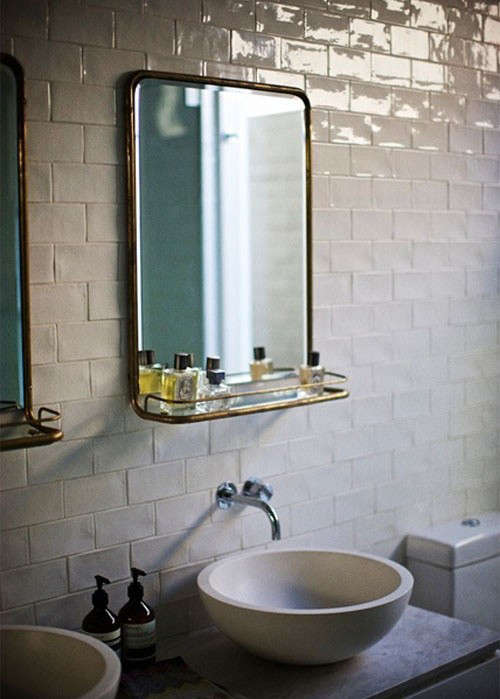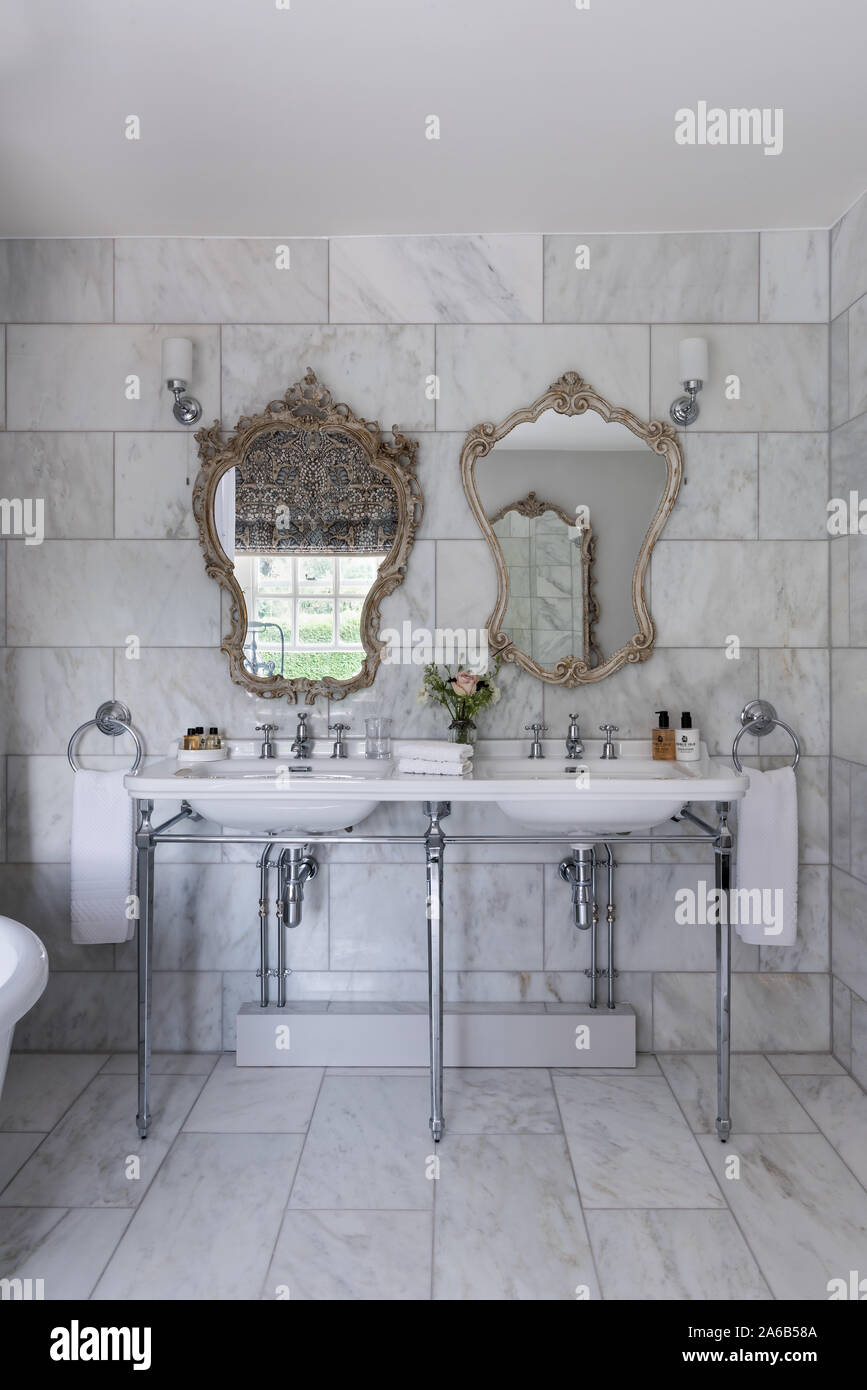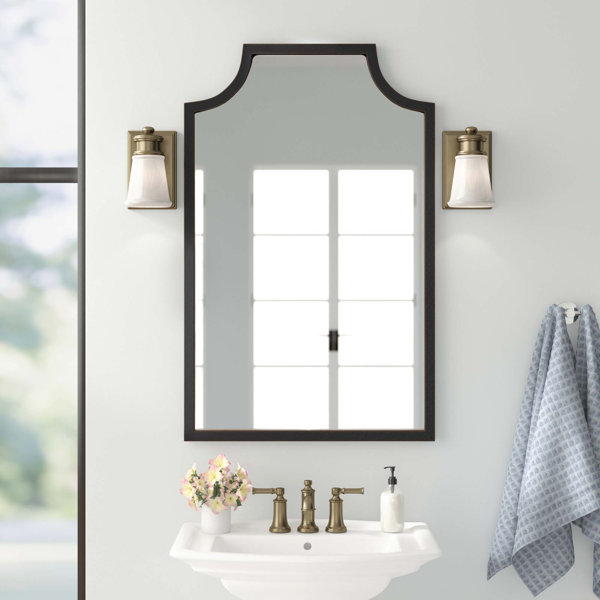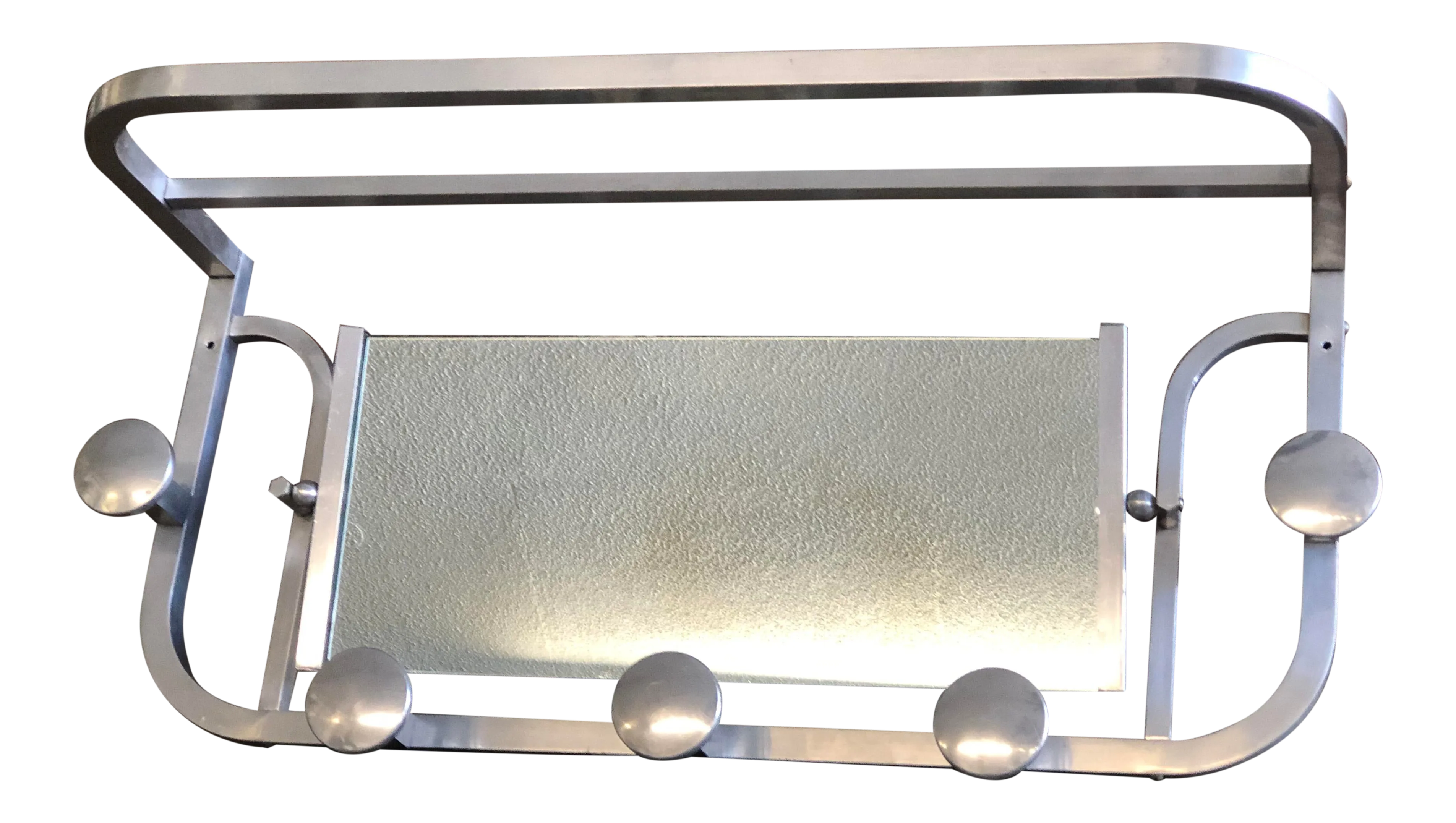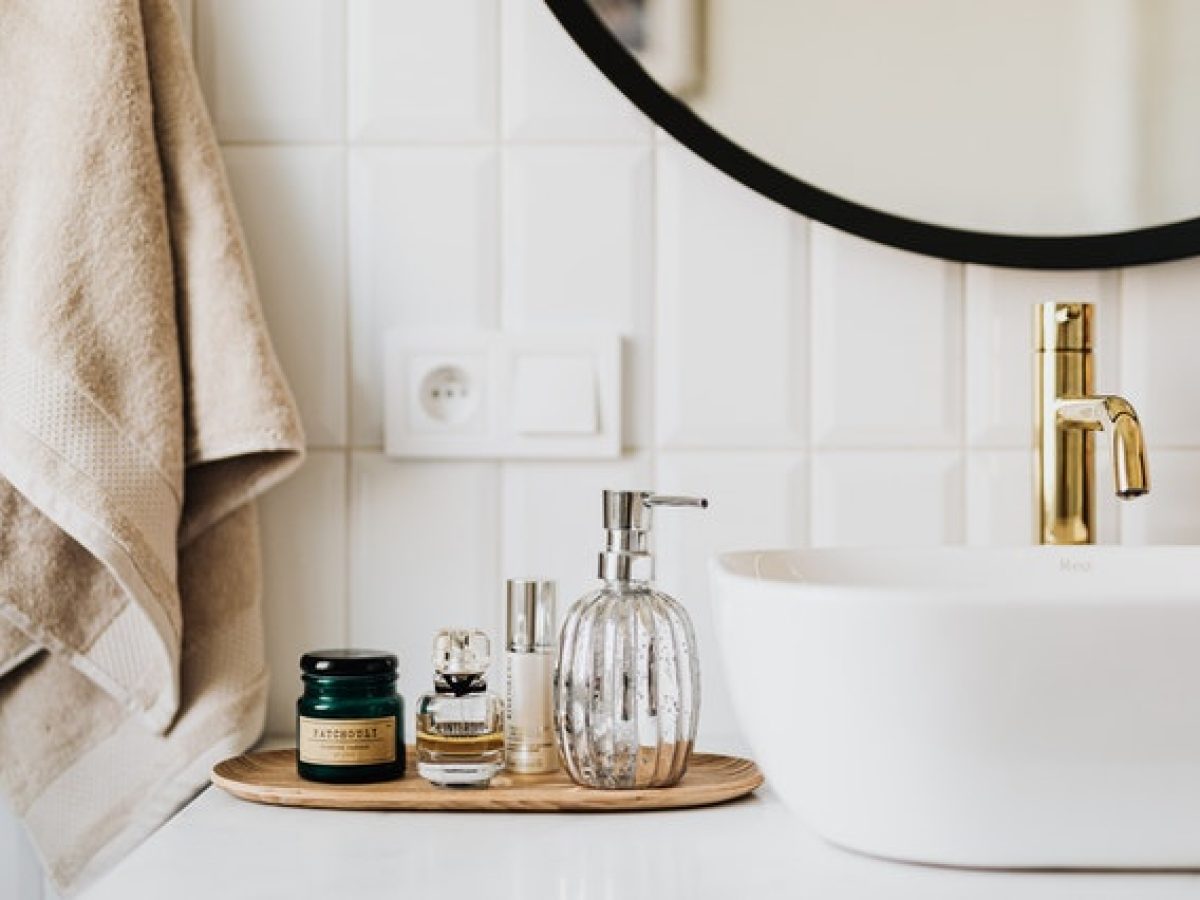The Evolution of Bathroom Mirrors in the 1930s
The 1930s marked a significant period of transformation in bathroom design. As society embraced modernity and technological advancements, bathroom mirrors evolved to reflect these changing times. From basic functional pieces to stylish and innovative accessories, bathroom mirrors of the 1930s became an integral part of the modern home. Let’s talk about the evolution of bathroom mirrors during this era.
- Integration of Modern Materials: One notable aspect of the evolution of bathroom mirrors in the 1930s was the use of modern materials. Mirrors were no longer confined to simple frames; designers experimented with materials like chrome, nickel, and glass. These materials not only added a sleek and contemporary touch to the mirrors but also enhanced their durability.
- Streamlined and Minimalist Designs: During the 1930s, there was a shift towards streamlined and minimalist designs in all aspects of interior design, including bathroom mirrors. Mirrors with clean lines and simple shapes became popular, reflecting the influence of the modernist movement. This minimalist approach created a sense of spaciousness and simplicity in bathrooms, aligning with the overall design ethos of the era.
- Improved Illumination: The 1930s witnessed advancements in lighting technology, and this had a significant impact on bathroom mirrors. Mirrors were now equipped with built-in lighting fixtures, providing improved illumination for grooming and makeup application. These lighting fixtures often featured Art Deco-inspired designs, further enhancing the aesthetic appeal of the mirrors.
- Swivel and Adjustable Features: Another notable feature that emerged in 1930s bathroom mirrors was their swivel and adjustable functionality. This allowed users to pivot and tilt the mirror to their desired angle, providing optimal visibility and convenience. This innovative design feature catered to the growing demands of users who sought both style and functionality in their bathroom accessories.
- Incorporation of Storage Space: As bathrooms became more functional spaces, designers recognized the need for storage solutions. Bathroom mirrors of the 1930s started incorporating storage compartments, such as small shelves or cabinets, behind the mirror surface. This clever design not only maximized space but also added a practical element to bathroom mirrors.

How Bathroom Mirrors in the 1930s Embraced Glamour and Elegance
The 1930s was an era characterized by the Art Deco movement, which greatly influenced various aspects of design, including bathroom mirrors. Art Deco style, with its emphasis on geometric shapes, bold colors, and luxurious materials, revolutionized the design of bathroom mirrors during this period. Let’s explore how bathroom mirrors in the 1930s embraced glamour and elegance with Art Deco influence.
Geometric Shapes and Patterns: Art Deco-inspired bathroom mirrors often featured geometric shapes and patterns. Rectangular and circular mirrors with stepped or sunburst frames became popular choices. These distinctive shapes added visual interest and a sense of sophistication to bathroom spaces.
Luxurious Materials: Art Deco style was synonymous with luxury and opulence. Bathroom mirrors of the 1930s reflected this trend by incorporating luxurious materials such as gold, silver, and brass. These metals were often used for the frames and accents, adding a touch of glamour and elegance to the mirrors.
Ornate Details: Art Deco-inspired bathroom mirrors were known for their ornate details. Intricate etchings, engravings, or inlaid designs were commonly seen on the mirror frames. These decorative elements added a sense of artistic flair and made the mirrors stand out as statement pieces in the bathroom.
Vibrant Colors: Art Deco design embraced vibrant colors, and bathroom mirrors of the 1930s were no exception. Mirrors were often adorned with bold hues such as deep blues, rich reds, or striking yellows. These vibrant colors created a striking contrast against the mirror surface and added a sense of drama to the bathroom space.
Mirrored Surfaces: Art Deco design celebrated reflections and symmetry. Bathroom mirrors in the 1930s often featured mirrored surfaces not only on the main mirror but also on the frame or surrounding areas. This clever use of mirrors created an illusion of depth and enhanced the overall visual impact of the mirrors.
The Features that Defined 1930s Bathroom Mirrors
The 1930s was a period of innovation and progress, and bathroom mirrors were no exception. During this era, designers explored new ideas and concepts to create bathroom mirrors that were not only visually appealing but also highly functional. Let’s discuss the features that defined 1930s bathroom mirrors in terms of their innovative design and functionality.
Magnifying Mirrors: One of the key features that emerged during the 1930s was the integration of magnifying mirrors within bathroom mirrors. These small, circular mirrors with magnifying properties were often attached to the main mirror or positioned on a swivel arm. They provided a close-up view for grooming tasks, such as applying makeup or shaving.
Adjustable Lighting: The 1930s saw the introduction of adjustable lighting features in bathroom mirrors. Mirrors were equipped with built-in lighting fixtures that could be adjusted to different intensities or color temperatures. This allowed users to create the perfect lighting ambiance for various tasks, such as applying makeup or relaxing in the bath.
Built-in Storage: To maximize space and enhance functionality, bathroom mirrors of the 1930s often incorporated built-in storage solutions. These storage compartments were cleverly designed to blend seamlessly with the mirror, providing a discreet yet convenient space to store toiletries, cosmetics, or other bathroom essentials.
Anti-Fogging Technology: To combat the issue of foggy mirrors after a shower or bath, innovative anti-fogging technology was introduced in 1930s bathroom mirrors. This technology prevented the mirror surface from misting up, ensuring clear visibility even in steamy bathroom environments. This feature added convenience and eliminated the need for wiping down the mirror constantly.
Integrated Bluetooth Speakers: In a nod to modern technology, some 1930s bathroom mirrors featured integrated Bluetooth speakers. This allowed users to enjoy their favorite music or podcasts directly from the mirror while getting ready in the morning or unwinding in the evening. This innovative feature combined functionality with entertainment, creating a truly immersive bathroom experience.
Exploring the Range of Styles in 1930s Bathroom Mirrors
The 1930s was a decade of diverse design styles, and bathroom mirrors were no exception. From simple and understated designs to extravagant and ornate pieces, there was a wide range of styles available during this era. Let’s explore the transition from simplicity to extravagance in 1930s bathroom mirrors and the design styles that defined them.
Minimalist and Functional: At the beginning of the 1930s, bathroom mirrors embraced a minimalist and functional design aesthetic. These mirrors featured clean lines, simple shapes, and unadorned frames. The focus was on practicality and efficiency, with minimal embellishments or decorative elements. These mirrors seamlessly blended into the bathroom space, creating a sense of simplicity and understated elegance.
Art Deco Glamour: As the decade progressed, bathroom mirrors began to embrace the glamorous and opulent style of Art Deco. Mirrors with bold geometric shapes, ornate details, and luxurious materials became popular choices. These mirrors exuded a sense of grandeur and became statement pieces in the bathroom, adding a touch of Hollywood glamour.
Hollywood Regency: Inspired by the silver screen and the luxurious lifestyles of Hollywood stars, the Hollywood Regency style emerged in the mid-1930s. Bathroom mirrors in this style featured intricate detailing, mirrored surfaces, and glamorous accents such as crystal or gold accents. These mirrors brought a sense of drama and extravagance to bathroom spaces, evoking a sense of Old Hollywood allure.
Streamlined Modernism: Towards the end of the 1930s, bathroom mirrors took a more streamlined and modern approach. Influenced by the rise of modernist design, these mirrors featured sleek lines, minimalistic frames, and innovative materials. Mirrors with chrome or nickel finishes became popular choices, reflecting the era’s fascination with technological advancements and futuristic aesthetics.
Classic Elegance: Amidst the diverse styles of the 1930s, classic elegance remained a constant choice for bathroom mirrors. These mirrors featured timeless designs, often inspired by traditional or Victorian influences. Intricate carvings, delicate motifs, and rich wood frames were characteristic of this style, adding a touch of sophistication and refinement to bathroom spaces.
The Enduring Charm of Vintage 1930s Bathroom Mirrors
Despite the passage of time, vintage 1930s bathroom mirrors continue to captivate and hold a special charm. Their unique blend of historical significance, timeless design, and craftsmanship makes them sought-after pieces for both vintage enthusiasts and design aficionados. Let’s see why vintage 1930s bathroom mirrors continue to endure and captivate even in modern times.
Nostalgic Appeal: Vintage 1930s bathroom mirrors evoke a sense of nostalgia, taking us back to a bygone era. These mirrors remind us of a time when craftsmanship and attention to detail were highly valued, and design was a reflection of societal changes. Owning a piece of history adds a sense of depth and character to any space, making vintage 1930s bathroom mirrors cherished possessions.
Timeless Design: The design of 1930s bathroom mirrors was characterized by a balance between functionality and aesthetics. The clean lines, elegant proportions, and classic materials used in these mirrors have stood the test of time. Their timeless design allows vintage 1930s bathroom mirrors to seamlessly integrate into a variety of interior styles, from traditional to contemporary.
Craftsmanship and Quality: Vintage 1930s bathroom mirrors were crafted with exceptional attention to detail and quality. Skilled artisans and craftsmen of the time took pride in creating mirrors that were not only functional but also beautiful. The use of high-quality materials and meticulous craftsmanship ensured that these mirrors stood the test of time. The durability and longevity of vintage 1930s bathroom mirrors make them highly desirable in today’s disposable culture.
Unique and One-of-a-Kind: Each vintage 1930s bathroom mirror carries its unique history and story. These mirrors have witnessed decades of use and have aged gracefully, showcasing their authenticity and character. The patina, imperfections, and signs of wear add to their charm, making each piece truly one-of-a-kind. Owning a vintage 1930s bathroom mirror allows you to own a piece of history that cannot be replicated.
Sustainable and Eco-Friendly: In an era where sustainability and eco-consciousness are increasingly important, vintage 1930s bathroom mirrors offer a sustainable and eco-friendly option. By purchasing and repurposing these mirrors, you are contributing to a more sustainable lifestyle by giving new life to a piece that might otherwise end up in a landfill. Vintage mirrors are a sustainable design choice that adds a unique touch to any space.
Versatile and Adaptable: Vintage 1930s bathroom mirrors are incredibly versatile and adaptable to different design aesthetics. Whether your style is vintage, retro, modern, or eclectic, these mirrors can seamlessly blend into any interior. They can serve as a focal point in a bathroom or be incorporated into a gallery wall, adding a touch of nostalgia and character to any space.
1930s Art Deco style decorative mirrors above double washbasin in
1920s and 1930s bathrooms Art deco bathroom, Vintage bathrooms
1930s Bathroom Remodel u2013 Reveal u2013 Life Is Sweet As A Peach
Bamboo Pagoda Frame Wayfair
1920s to 1930s Vintage Art Deco Bathroom Vanity Mirror
Art Deco Mirrors – VisualHunt
Stunning art deco bathrooms – mirrors, lights and vanities
Rectangular Art Deco Vanity Mirror
Related Posts:


